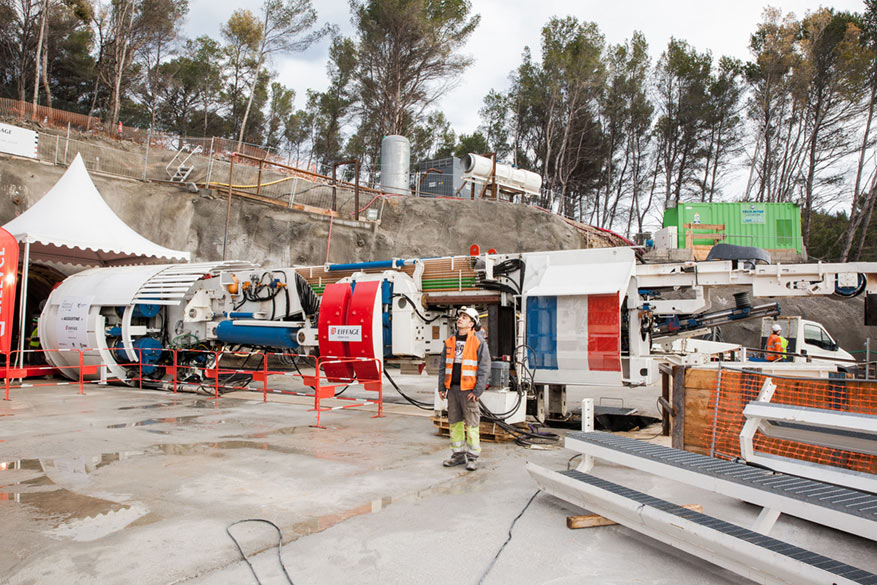Rebuilt Robbins TBM for water supply 27 Apr 2017
After seven previous successful projects, in Europe and in Hong Kong, a 3.5m diameter Robbins TBM is commissioned and launched to undertake its eighth tunnel drive for a water project in France.
After a modernization and upgrade rebuild, the TBM was commissioned and launched in early March by French contractor Eiffage Civil Engineering for a 2.7km drive for the Galerie des Janots water supply project in La Ciotat, France.
"The machine will work 24 hours a day for almost 10 months to complete this project,” said Marc Dhiersat, Project Director of Galerie des Janots for Eiffage.
The TBM will bore primarily through limestone to excavate the Janots gallery to improve access to water in the Cassis, Roquefort-la-Bédoule, La Ciotat and Ceyreste communities east of the Aix-Marseille-Provence metropolis. The 2.7km long drive will pass under Le Parc National des Calanques and beneath a cover of between 15m and 180m.
“Limestone is a rock easy to excavate,” explains Loïc Thévenot, Director of Underground Works for Eiffage, “but there is the possibility of being confronted with the phenomenon of karst features.” To cope with the risk, the TBM is equipped with a probe drill and equipment to backfill small karst features. “If the feature is large, we will erect a small parallel gallery,” said Thévenot.
Since its launch in March, the machine has bored more than 51m and is ramping up to speed as back-up gantries are added.
The Galerie des Janots is part of a project to save water and protect resources being carried out jointly by the Aix-Marseille-Provence metropolis, the water agency Rhône Mediterranean Corsica, and the State Government.
The future Janots gallery will replace existing pipelines currently located in a railway tunnel. These have significant safety and vulnerability deficiencies and currently suffer losses of an estimated 132 million gallons of potable water per year.
“This project is an investment of €55 million,” said Danielle Milon, Mayor of Cassis at a TBM launch ceremony in March. “The objective of the new tunnel is also to increase the water supply capacity from the current 330 liters per second, which is insufficient in the summer period, to 440 liters per second, as well as provide easier access for maintenance compared to the old pipes currently running beneath the railway.”
References
- TBM accepted for Delaware challenge in the USA – TunnelTalk, March 2017
|
|
|
|
|
Add your comment
- Thank you for taking the time to share your thoughts and comments. You share in the wider tunnelling community, so please keep your comments smart and civil. Don't attack other readers personally, and keep your language professional.





